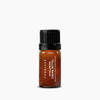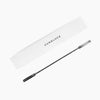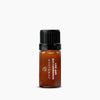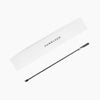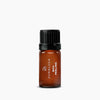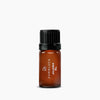
October 27, 2020
Delicate baby skin - important tips and the right care
by Leonie Poppe
From the moment you become pregnant, an exciting journey begins in which you get to know yourself and your body anew. But with every change comes unanswered questions, uncertainties and challenges. You prepare for your baby step by step and only want the best for the little miracle in your belly. But does baby skin really need special care or is it just a classic marketing strategy? With so many products on offer, it is difficult to decide what is really necessary. I would like to give you a few pointers here so that you can decide for both of you what should have a place in your bathroom.
- Baby skin - the beginning of a long journey
- Red spots, pustules, eczema - what could it be?
- What care does my child need?
- Checklist - What should I have at home?
Baby skin - the beginning of a long journey
When your baby is born, the skin is usually tender, soft and untouched. What we cannot see with the naked eye, however, is that the skin is thinner and the subcutaneous tissue is not yet fully developed. Substances from the environment can pass through the natural barrier more easily and stimuli or cold are also perceived more strongly. The sebaceous and sweat glands are still developing, which means that the little ones are not yet able to fully regulate their body temperature. They also lack the protective film of oil produced by natural sebum production. If you look at the ratio of skin surface area to body size, it is more than twice as large in newborns compared to adults. The skin of these little explorers loses moisture more quickly and consequently dries out more and thus offers a larger surface area for bacteria, fungi and other harmful substances from the environment to attack. Melanin production is also still reduced, which means that baby skin can hardly protect itself from UV rays Protect .
It takes around ten years for the skin to mature. At birth, the skin's pH-value is in the neutral range at around 6.5. The natural acid mantle is formed right from the start due to the so-called cheese layer that the child wears all over its body. However, this only changes to the normal acidic pH-value of 5.5 after around six weeks and thus becomes more resistant. The skin of an adult manages to rebalance its natural acid mantle within a few hours after a shower or general contact with water and surfactants. Unfortunately, this takes a lot longer for babies. Baby care is therefore not a marketing ploy, but essential to maintain protection day after day. So nothing stands in the way of your child's journey of discovery.
Red spots, pustules, eczema - what could it be?
Red spots in the first few days to weeks are normal and usually harmless. As a rule, it is a matter of getting used to the amniotic fluid and the new ambient air. The new temperature fluctuations and the new feeling of clothing on the skin can also be irritating at first. Some spots and pustules come and go on their own, but some remain and need to be treated by a doctor. We have listed the most common cases here.
Baby acne
If red pustules form all over the face in the first few weeks of life (often around the 3rd week of life), this is known as baby acne. Around 20% of newborns are affected and the phenomenon is considered completely harmless.
Baby acne is characterized by
- Reddish pimples
- Yellowish nodules
- Especially to face up to the rib cage
- not caused by incorrect care or nutrition
- does not itch or hurt
One possible cause of this is the hormonal change after birth. During pregnancy, hormones are constantly transferred into the child's bloodstream via the mother's placenta. Especially in the last trimester, hormone release increases to promote lung maturation and the development of the immune system. Once the birth is over, the hormone level drops again and sebum production begins. The skin reacts with excessive demands and the fine pores become clogged and small pimples appear. Once the hormone balance settles and the skin gets used to the change, the pimples disappear again and the smooth baby skin returns within a few days or weeks.
As a parent, you need to be patient and consult your midwife or pediatrician to make sure that it is "just" baby acne. It is important never to squeeze or open the pustules. This injures the skin and bacteria can penetrate more easily and ultimately promote inflammation.
The affected areas are best cleaned gently with a little water and gently dabbed dry with a soft, clean cloth.
Spit-up breast milk can increase baby acne, so you should make sure that the milk residue is removed gently and thoroughly. If inflammation does occur, a calendula tincture from the pharmacy can help. Simply apply a few drops tincture with a little water to a clean cotton cloth and dab the affected areas.
Infant acne (acne infantum):
Caution: confusion is very common here. Not only is the name similar, the symptoms are also initially very similar to those of baby acne. But if the supposed baby acne starts to itch or hurt, it is probably infant acne. In this case, a visit to the pediatrician is unfortunately unavoidable. Visually, it looks like baby acne, but it lasts longer and usually only appears between the 3rd and 6th month of life. Doctors assume a genetic cause, which unfortunately no longer disappears on its own with just water. In most cases, anti-inflammatory medium or antibiotics are prescribed for treatment.
Skin gravel (milia):
If small white spots appear in the first few weeks after birth, mainly on the nose, cheeks, forehead, chin and around the eyes, they are usually skin gravel. Here too, hormones are the trigger and as quickly as they appear, they usually disappear again by themselves.
Atopic eczema (neurodermatitis):
This refers to a large, red rash that can itch, ooze or even crust over. It is mainly found to face, on the scalp, arms or legs and usually develops from the 3rd to 6th month of life. Atopic dermatitis is largely hereditary and in most cases cannot be completely cured. However, neurodermatitis in babies in particular can subside over the course of childhood.
If you would like to find out more, you can find more information here in our blog post!
However, it is also important to avoid itching and skin irritation to prevent lifelong scars. This is of course difficult to control, especially with newborns, but there are extra small cotton gloves that you can put on your baby, especially at night.
Head gneiss:
Around the 6th to 8th week of life, yellowish, scaly crusts can form from the forehead to the fontanel area. This is caused by hormonal overproduction of sebum, which does not necessarily have to be removed. The scaly areas can be rubbed with a little oil 2-3 times a week in the evening and removed the next morning with a gentle baby comb or a clean cloth. Even if it may not look so nice, the dandruff will come off by itself over time.
Our Baby Oil is very suitable for this, as it is very mild and gently cares for the skin.
What care does my child need?
As we know, everyone's skin structure is different and we should therefore tailor our skin care to our individual needs. Nevertheless, there are a few basic things you can bear in mind when caring for babies and toddlers.
cleanser
Body
Immediately after birth, the baby does not need any special care products. It does not get very dirty, nor does it sweat excessively. The remains of the cheese Moisturize the skin rich. Only milk residue and dead skin cells should be removed with a damp, lukewarm cloth (without soap!), especially on the neck, under the armpits or in the groin area. This way you can be sure that no inflammation can form.
Until the umbilical cord residue has fallen off or until the baby's body temperature has stabilized, it is not advisable to use a proper Baby Bath . However, the navel should also be cared for regularly so that no inflammation can form. It is best to clean this sensitive area with water or possibly a little baby soap. Avoid oil, powder or lotions. This is because such bases can seal the skin and thus promote inflammation.
Once the navel has healed nicely, the bathing fun can begin 1-2 times a week! Make sure that the water temperature is 37°C and that the baby is covered with water up to the shoulders. Our mild bath additive Baby Bath especially for babies and toddlers. Add a few drops to the water and spread evenly with your hands. The bath should last no longer than 5-10 minutes. When you take a bath is entirely up to you and it is up to you to create a routine. However, it is not recommended directly after meals, because as we know: "You can't swim on a full stomach!".
Hair
No shampoo is necessary for fine hair after birth. However, if the hair becomes thicker, special baby shampoos can be used. These are particularly gentle on the scalp and do not sting the eyes. On bath-free days, it is a good idea to clean the face, hands and buttocks with a fresh lukewarm washcloth.
Care
Now your baby is clean, it's time to nurse. Cuddles and tender loving care are essential for your child's emotional and social development. Go on a journey of discovery yourself and find out what gives your baby and you the most pleasure and what is best for you.
It is important that you and your partner wash your hands thoroughly before touching your child's skin.
Diaper area
You can apply a thin layer of anhydrous baby balm Protect to the baby's buttocks and genital area to give it a moisture-repellent protective film. If the sore area does not improve after 1-2 days, I recommend that you ask a midwife or your pediatrician for advice!
dry skin
If the baby's skin shows signs of dryness, our Baby Oil. It nourishes with natural plant oils and protects the skin from further drying out. A baby massage not only brings you closer together, but also paralyzes stress hormones and activates immune cells. Whether for colic or constipation or as a relaxation ritual, your baby is used to being stroked during pregnancy and you can now both explore and discover each other's body language.
In cold weather
For walks on colder days and in rough weather, you should use a rich and water-free fat-based baby balm such as our baby balm apply to give the skin an extra layer of protection.
Of course, sun screen is also very important. As I have already mentioned, your baby's delicate skin is not yet able to protect itself so well Protect. It is therefore best not to expose them to direct sunlight in the first place and otherwise always apply SPF 50+.
Eyes, nose and ears
Do not clean the ear or nose with a cotton bud. Simply use a cloth towel, which you twist together slightly. This way there is no risk of injury. The eyes can also be cleaned with a lint-free cotton cloth moistened with boiled water to remove dirt and "sandman residue". Always from the outside towards the nose!
The nails
Last but not least, we don't want your baby to hurt themselves with their nails, so it's important to trim them regularly. In the first few days, the transition from nail to nail bed is not really noticeable, so it is not so acute in the first 4-6 weeks. After that, the nails are usually still very soft and can be easily removed if they are torn a little. If they are a little harder, special baby nail scissors are ideal for this. They are smaller, more flexible and therefore easier to handle. On the hands, you should make sure several times a week that there are no sharp edges or tears in the nails. Toenails grow much more slowly, so it's enough to check the nails a little less often as needed . As babies are not yet familiar with this procedure and their coordination is still unconscious, I recommend that you either cut the nails together with your partner or use the quieter phases, for example while breastfeeding or sleeping.
In general, our junglück baby care is suitable for the whole family thanks to its extra mild ingredients. Whether as a care cream for mom and dad, special care for dry, inflamed areas or as a bath additive for an extensive family bath, there is something for everyone!
Discover our mild and purely plant-based care range for your baby's delicate skin here!
Checklist - What should I have at home?
That was a lot of facts and tips, so we have summarized everything again in a checklist:
- soft washcloths
- Cotton cloths
- High-quality vegetable oil
- Care cream for face and body
- Wind and weather balm
- Wound protection balm
- Baby Bath
- Baby hairbrush
- Baby nail scissors
Care time = relationship time
This time gives you the opportunity to get to know each other better, to get to know each other and to find out what you need as a family. Take your time, take care of each other and enjoy the intimate moments!
If you have any questions or suggestions, please write to us ☺
See you next week!
Take care.

Sources:
- Elsässer Sabine, Body Care Science and Cosmetics, Springer Medizin Verlag Heidelberg 2008
- https://www.pharmazeutische-zeitung.de/richtig-gepflegt/
- https://www.deutsche-apotheker-zeitung.de/daz-az/2018/daz-38-2018/hochempfindlich


